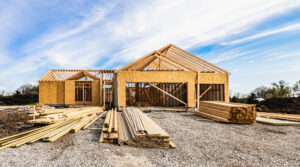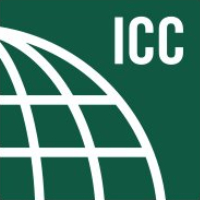
Comparing Building Regulatory Systems in New Zealand, Australia and the United States
The Code Council, BOINZ, and ACC recently held a webinar to compare building control features between the United States, New Zealand and Australia.
The International Code Council, in partnership with the Building Officials Institute of New Zealand (BOINZ) and the Association of Australian Certifiers (AAC), recently held a webinar to compare building control features between the United States, New Zealand and Australia.
All three countries have advanced building regulatory systems, codes and standards; however, the Australian and New Zealand building codes are performance-based.
Performance-based building codes are regulatory instruments that focus on achieving specific outcomes and functional goals in construction projects, rather than prescribing specific design and construction standards.
This means that compliance can be demonstrated through either a Performance Solution (Australia) or Alternative Solution (New Zealand), and where a prescriptive solution does exist, it is by way of Deemed to Satisfy Solution/Acceptable Solution, rather than equivalence to a referenced standard.
The performance-based codes stand in contrast to the predominant building codes used in the U.S., which point to prescriptive standards to define how the desired outcome is to be achieved, with the option of using alternative materials and methods if they can be demonstrated to provide substantial equivalence to the standards.

Australian and New Zealand Building Code and Standard Development
Unlike the codes used in the U.S., the Australian National Construction Code (NCC) and New Zealand Building Code (NZBC) are both developed and maintained by the government (in Australia, the federal, state and territory governments, and in New Zealand, the central government).
In Australia and New Zealand, the process of developing and maintaining the codes is government-funded and specific to each country. These codes are also universally adopted throughout both countries when each new edition is produced, although in the case of Australia there may be local variations determined by each state or territory government. In the U.S., adoption of the International Codes® (I-Codes) is a decision made by the state or local jurisdictions.
The NCC and NZBC are both developed through public processes and receive significant technical input from industry experts. New content for the NCC is determined by the Australian Building Codes Board and is then adopted into regulation by each of the states and territories.
In both the U.S. and Australia, the I-Codes and NCC are model codes developed for the purpose of adoption by local jurisdictions, with the distinction in Australia being that the eight local jurisdictions have entered into an Intergovernmental Agreement to adopt any new edition of the codes.
Comparing Building Control Systems
The building control system in Australia is unique among the three in that the bulk of building inspections and approvals are undertaken by private building surveyors/certifiers. These individuals, and in many cases the companies they represent, are effectively the authorities having jurisdiction (AHJs) for a range of responsibilities that are held by local and state government building officials in the U.S. and New Zealand.
There are private building surveyors or third-party inspection officials in the U.S. and New Zealand, however, they are typically contracted by building departments and building consent authorities to assist in discharging their responsibilities.
An advantage for New Zealand is that since there is a single tier of national government, it has one building act, one set of national regulations and one building regulator. With Australia and the U.S. both being federations, there are multiple pieces of building legislation, regulations and building regulators, which can create inconsistencies between jurisdictions.
Whilst this is amplified in the U.S. by virtue of no nationally agreed and uniformly adopted building code, neither Australia or the U.S. have nationally agreed registration requirements and minimum competencies for a range of building practitioners.
In the case of Australia, the state building regulator has the additional responsibility of overseeing the licensing and performance of private building surveyors/certifiers. All three countries place the burden of responsibility on a range of building practitioners to design and build in accordance with the respective building codes and where relevant, referenced standards.
Australia and New Zealand have a history of developing joint standards through their national standards writing bodies but will consider referencing international standards. In the U.S., there is a large number of standards writing bodies, which is reflected in the variety of organizations whose standards are referenced in the I-Codes.
Comparing Building Product Certification
Another area of comparison between the three countries is the approach to determining if building products are fit to be used for their intended purpose.
In the U.S., the I-Codes are clearer about which products are required, so the industry appears more accepting of the value of testing, inspection and certification by accredited entities.
In Australia and New Zealand, where there have been problems with the incorrect use of products and non-conforming products, the evidence of suitability requirements of the NCC and NZBC provide a range of options for products to demonstrate they are fit for purpose.
These options can include:
- Testing against a standard where one exists
- Third-party certification where there is no standard
- Product technical statements
- Reporting by an appropriately qualified person or through a CodeMark® certificate, which is a form of ‘Performance/Alternative Solution’ for products
In most cases, this places the responsibility of product certification on the product specifier, designer, builder and AHJ.
To learn more about building regulatory systems around the world please join the Insight Session about Building Code Enforcement: Global Best Practices that will take place during the International Code Council’s Annual Conference in St. Louis, Missouri (USA) from October 9-11, 2023. The Insight Session is sponsored by the ICC Global Membership Council and the ICC Global Solutions group and will be held (in-person only) from 11:30 a.m. – 2:30 p.m. on Monday, October 9. Learn more here.
The webinar recording Comparing Building Regulatory Systems in New Zealand, Australia and the United States can be found here.







